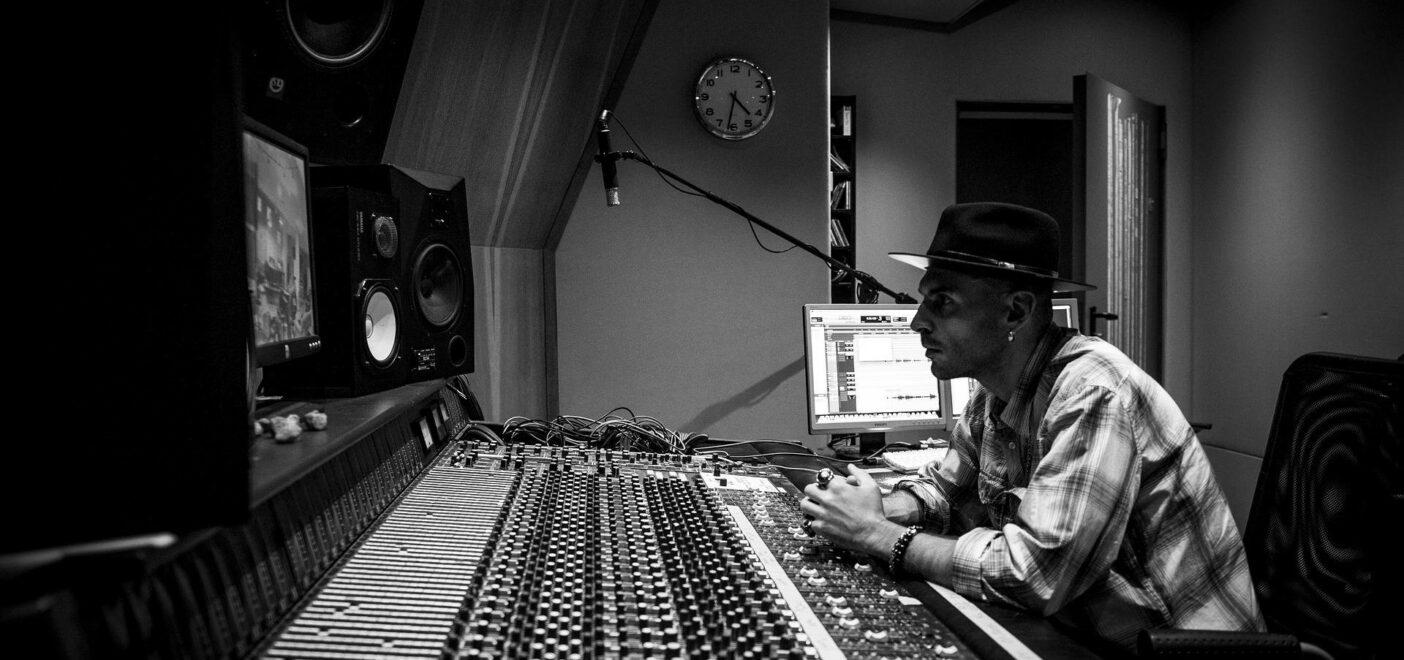The 80s was a decade known for decadence and pop culture. We witnessed the rise of technology and our first glimpse of the modern information age. Every year, people gather to have themed parties featuring 80s music and outfits. It’s certainly a time to reminisce about, and it’s something that many people are still drawing from today. The 80s sound and culture hit the music scene in a massive way, fundamentally changing how we create and consume music. Technology brought us new innovations and allowed us to explore new ideas.
That distinct sound might not be as popular today, but artists like Lorde, M83, The Weeknd, and Bon Iver, to name a few, are still emulating its character today and achieving great success. Today, I want to break down some of the most popular production techniques and sonic palettes that the 80s sound has to offer. Let’s explore some classic methods to spice up your new music!
Table of Contents
- 1. Gated Reverb in 80s Sound
- 2. Making Huge Lead Lines
- 3. The Rise of the Synthesizer
- 4. Drum Machines with 80s Sound
- 5. Vocal Reverb, Delay, and Harmonization in 80s Sound
- 6. Master Bus Mix Downs & Tape
- TL;DR
1. Gated Reverb in 80s Sound
It just wouldn’t be an 80s sound-related article if we didn’t talk about gated reverb. This is one of the most iconic sounds from that generation. Not only that, but it’s the one sound that has stuck around the most in modern productions. Now that I’ve mentioned it, you’ll hear it everywhere. Spawned from sheer chance during a Peter Gabriel recording session, gated reverb became a de facto method for adding power when recording and mixing drum hits. You’ll commonly hear this effect used on snares to make them sound bigger and more prominent, but it can also be applied to entire drum kits. The basics of this technique are as follows:

- Start by routing your snare track to a bus. This will be your reverb send. Add your favorite reverb plugin to the bus and set it up with a nice big hall sound. The 80s sound is all about space, so don’t be shy with your reverb times. Aim for something with 2-3 seconds of decay.
- Now that we have that nice big reverb set up, we need to apply the gate. You’ll need a gate plugin that allows sidechain routing. Place it directly after your reverb plugin and set it up with a fast attack and moderate release time. You’re trying to make your gate match the shape of a normal snare hit.
- Finally, use the sidechain input of your gate to route the original, dry snare signal into the gate. This way, the original snare signal triggers the gate, causing it to close when the snare drops below a certain level. The final sound will be thick and powerful without that long reverb tail taking up space in the mix.
It’s good practice to use a second reverb send after this to apply some universal ambience to your whole drum mix. This helps keep things sounding natural, as if they’re in the same space. Use this technique to achieve a quintessential 80s sound or simply to beef up your snare in a mix. If it sounds good, use it!
2. Making Huge Lead Lines
As you may have figured out by now, the 80s sound was all about space and power. Everything needed to sound huge and spacious to define how new and different it was from the past. A lot of music prior to the 80s was very clinical in its recording approach. Tight miking and precise EQ work resulted in clean, tight, and relatively dry sounds. Everything changed with the technology of the 80s!

If you’re looking to emulate those anthemic lead electric guitar riffs and synth lines typical of 80s music, it’s time to break out all of the modulation, reverb, and delay plugins you have. Chorus and ADT were very popular staples for 80s guitar riffs, used to make them sound artificially wide. A quick and easy way to emulate this is to either use your favorite chorus plugin or pedal in the mix, applying it liberally. Using it as an insert with a 50/50 wet/dry mix will get you well on your way to the right sound.
After that, it’s all about further liberal usage of reverb and then delays to create cavernous, cascading patterns that swell and fill up all available space in the stereo field. The 80s music sound is quickly distinguishable due to its (sometimes overbearing) use of reverb and spatial effects. If this is the sound you want, you really can’t have too much.
3. The Rise of the Synthesizer
Along with 80s music came 80s technology. Audio synthesizers became far more affordable and accessible to the average musician. Models such as the Yamaha DX7 became as common as guitars during the 80s. Many of their preset sound banks have been emulated by modern software because they became so iconic. This means that you can use the right sounds, even if you can’t get your hands on an original. Certain definitive piano sounds, along with huge pads, help to invoke that 80s sound and feel. If there is one takeaway from this article, it’s that 80s production techniques can help to beef up your mixes, even if you don’t want to sound 80s.

Another common and popular sound that many people will remember from the 80s is the arpeggio. Technological advances meant that synthesizers were becoming programmable as well as playable. This introduced effects banks and processors such as arpeggiators. With the ability to simply flick a switch and press a few notes to hear a variety of arpeggios, suddenly almost anyone could play technical rhythm sections. Many famous 80s hits feature bouncing basslines using octave arpeggios or chord-based arpeggio patterns as their backbone. If you’re not the most technical keyboard player or have no knowledge at all, try experimenting with some clever arpeggiators. They’ll add flair to your music regardless of the sound you’re aiming for.
4. Drum Machines with 80s Sound
Along with synthesizers came drum machines. The DMX and the Linn Drum machines suddenly made it so that anyone could program a beat in their own time and then play over it. Much like the arpeggiator, it gave people who couldn’t play a chance to mess around and do something new and different. Now, this isn’t to say that using a drum machine is a talentless skill but it did open up the market to a whole host of new musicians who wanted to be heard. Electronic drums completely changed the landscape of music. I’m sure many of the bedroom laptop producers reading this can agree that it’s hard to do what you do, but the technology really helps in the beginning.
I will keep this bit short. If you’re looking for that 80s sound then I’d suggest you delve into the sound banks of some of the original machines. Many drum sample packs that now exist are digital collections of these sounds so you won’t need to break the bank trying to buy an original Linn LM1. Learn from some 80s drum machine productions because this is where it all began!
5. Vocal Reverb, Delay, and Harmonization in 80s Sound

Second to last, we come to vocals. You might be surprised to read that the key here is space and power! Lots of post-production was applied here, but believe it or not, nowhere near as much as is usually applied today. For space, Lexicon reverb units were the standard. Their luscious hall and plate simulations were incredibly accurate, meaning you no longer needed a large space to achieve that sound.
Short slapback delays were popular to create a sense of depth and presence. Coupled with much larger delays to fill up space, you can achieve a pretty full sound from just one track. Finally, we move on to harmonies, lots of harmonies. This is something you’ll hear in a lot of 80s pop music. Layers of harmonies and double tracks thicken up the vocal lines to make them dominate the entire mix. It’s a technique that like gated reverb, never really died away. If it’s not something you’re using, I’d suggest you give it a whirl because it’s a big game-changer.
The key takeaway about 80s sound and vocals is that they were often dramatic, grandiose, and, in a sense, classical in nature. Back in the 80s, detailed pitch correction and auto-tuning were merely concepts, so singers really had to be able to sing. This means that the occasional warbled note or slightly flat word sometimes made it through. If you’re looking to create a genuine 80s music production, keep this in mind and try not to be too much of a perfectionist.
6. Master Bus Mix Downs & Tape

Finally, we’re at the mixdown stage. In the 80s, tape decks were still very common in studios. However, they were beginning to pair more and more of them with large format consoles that had plenty of fancy new features. One of the most defining pieces of technology that truly shaped the pristine sound of the 80s was the SSL desk. Suddenly, you could apply British EQ to every channel, carving out muddy areas and boosting presence and clarity, and apply one of the best VCA bus compressors every created to your mixes.
This, following our 80s theme, allowed everything to have so much more power and really fill up all the space. Pushing this to [audio mastering on tape after compression to add some more warmth and tape compression resulted in mixes that sounded loud but were still incredibly dynamic. Just like our auto-tune, brick-wall [audio limiters weren’t really a thing. As such, bus compressors were used a little more liberally but we still ended up with very dynamic music. This is the lesson I think everyone should take away from this article. Things can sound full, loud and powerful without needing to be bled dry of their dynamics.
TL;DR
The 80s was an interesting time full of decadence and technological advancements. As such, the 80s sound really stands out as a unique era within history. Learning from some of the common techniques used in this generation could really help to bring some power and fullness to your mixes, even if they are a completely different style. Gated reverb is a very specific sound and it isn’t for everyone. However, if you’re looking to get those drums sounding big and punchy, it might be worth trying out.

When it comes to sound choices, don’t be afraid to look into the synthesizers and drum machines from the 80s. These distinct sounds became popular for a reason. It’s because they work! Remember to make use of reverb, delay and modulation effects for things like guitars, leads, and vocals. They’re going to thicken everything up and create some beautiful soundscapes within your mixes.
If you hate 80s music but admire the quality of the mixes, you need to check out SSL mixing consoles. Emulations from Slate and Waves do it great justice and these powerful desks can add presence, cut mud and boost dynamics like no other.
Informazioni sull'autore

Tim Dunphy
Ingegnere audio e scrittore di contenuti specializzatiOltre 10 anni di esperienza nel settore audio. Tutto, dall'avvolgimento degli XLR alla masterizzazione degli album. Sono un uomo che si è fatto da solo e conservo i miei beni in Bitcoin. Cos'altro c'è da sapere?
Lascia un commento
Log in per commentare


